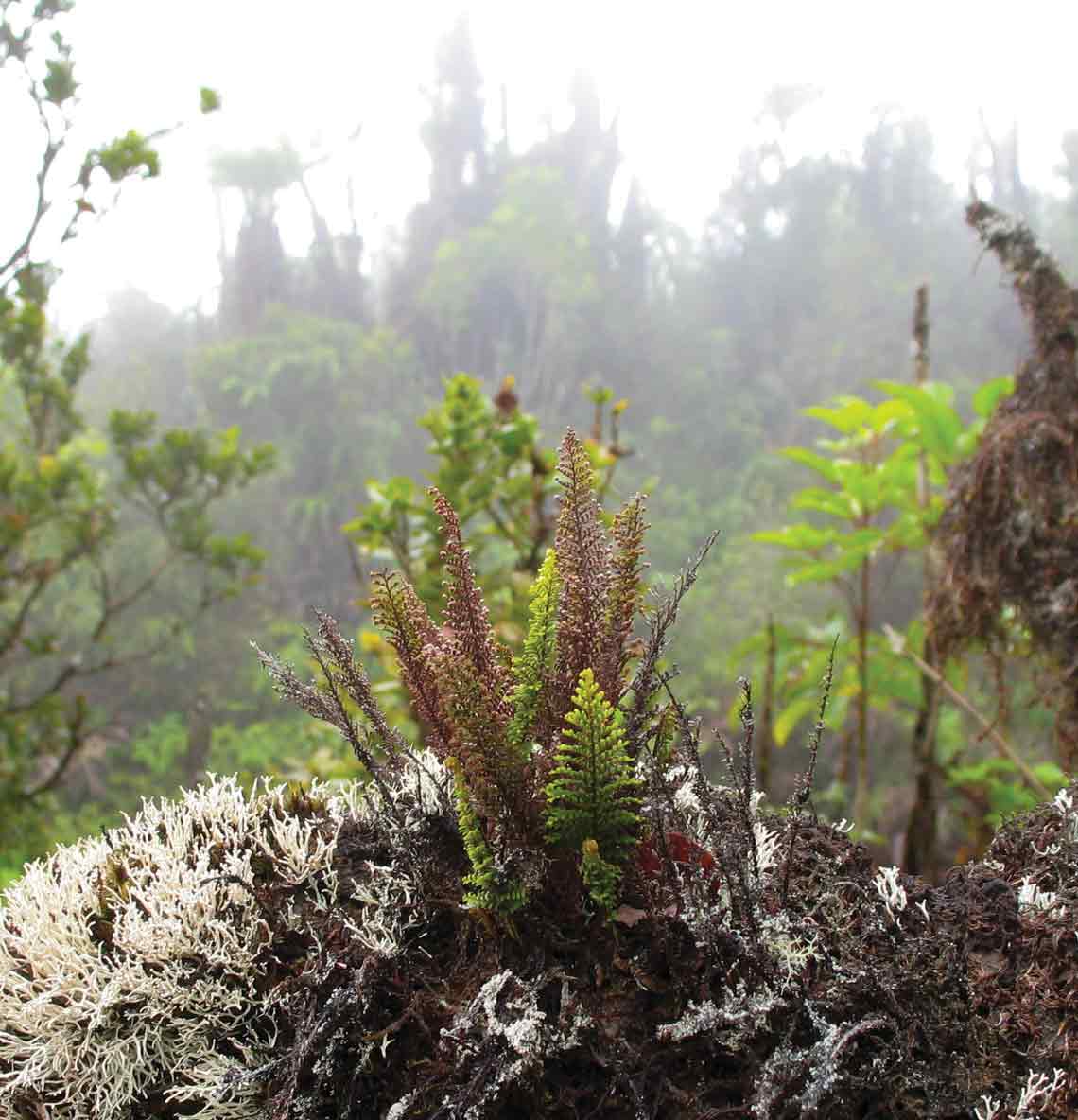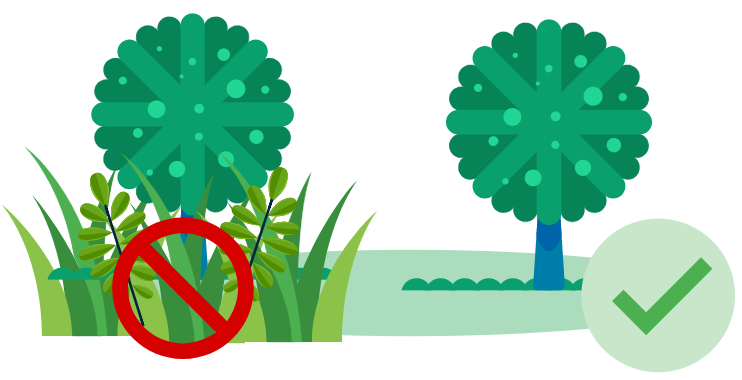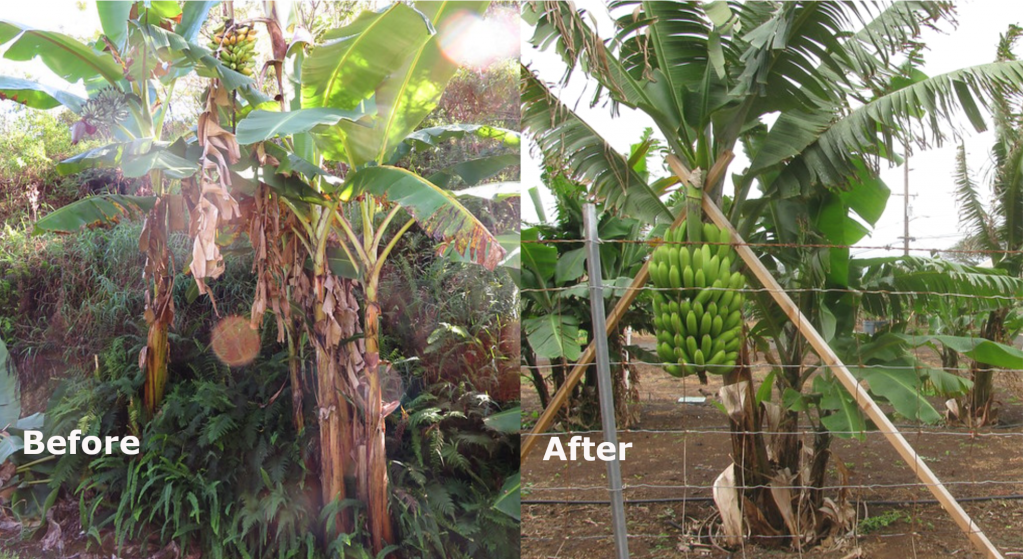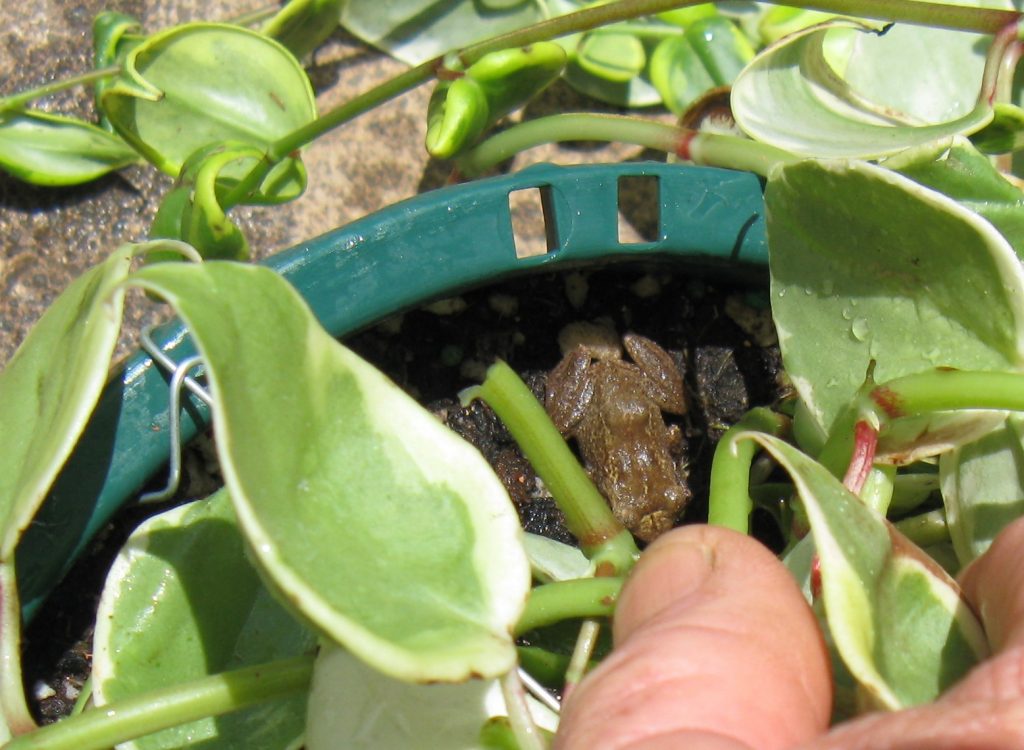
Make Your Yard Un-Friendly to Coqui Frogs
The lush, tropical vegetation and warm, moist climate and lack of native predators make Maui an ideal habitat for coqui frogs. Fortunately, some simple habits around your home and yard can make your property less welcoming to the noisy intruders. The acronym TRIM can help you remember the habits we recommend: Tidy Up, Remove, Inspect, Mow

Tidy Up
Coqui frogs love thick vegetation, especially large, decaying plant material such as banana or heliconia leaves that create shade and collect moisture. They will commonly perch where branches and leaves connect to the main trunk of a plant. They also love to hide and lay their eggs amongst old plant pots, cement blocks and other building materials. By regularly thinning out plantings, removing dead and decaying plant materials, and keeping plant pots and other materials organized you can reduce coqui frogs significantly. Trimming back plants also makes it easier to spray them if control of coqui frogs with citric acid is necessary.

If neighboring properties have coqui frogs it can be helpful to create a buffer area of no vegetation, including overhanging branches, of at least 5 feet around the perimeter of your property.
Coqui frogs also love to live in green waste. Properly dispose of green waste, rather than collecting it on your property or dumping it in a nearby gulch. Chipping green waste can also help, but removing it is the best management practice. It is illegal in Hawaii to knowingly transport coqui frogs and several infestations have been caused through improper disposal of green waste. If you have a landscape service make sure to ask how they manage green waste and choose one that acts responsibly.
Remove
Bromeliad plants are a favorite plant of coqui frogs and are often the first plants to become infested if coqui frogs occupy a property. Consider removing these plants or use them as a sentinel or guard plant and keep a close eye on them. Other coqui frog favorites include heliconia, bananas, false staghorn fern (uluhe), wild orchid, ginger, wedelia and tall grasses.
Inspect
Whenever you bring new plants or other materials onto your property inspect them thoroughly for the presence of coqui frogs or egg masses. Inspect the plants by getting up close and personal with them, turn over the leaves, spread out any vines, fluff up any mulch and don’t forget to look at the plant pot also. Next, isolate and monitor them for several days to listen for the male coqui frog call. Any building materials that have been sitting outside in areas known to have coqui frogs should also be inspected.

Mow
Coqui frogs love to live in tall, thick grass such as cane grass or molasses grass. This habitat can be very difficult to treat with citric acid so keep it mowed short to the extent possible. Large areas can be managed with grazing livestock.
